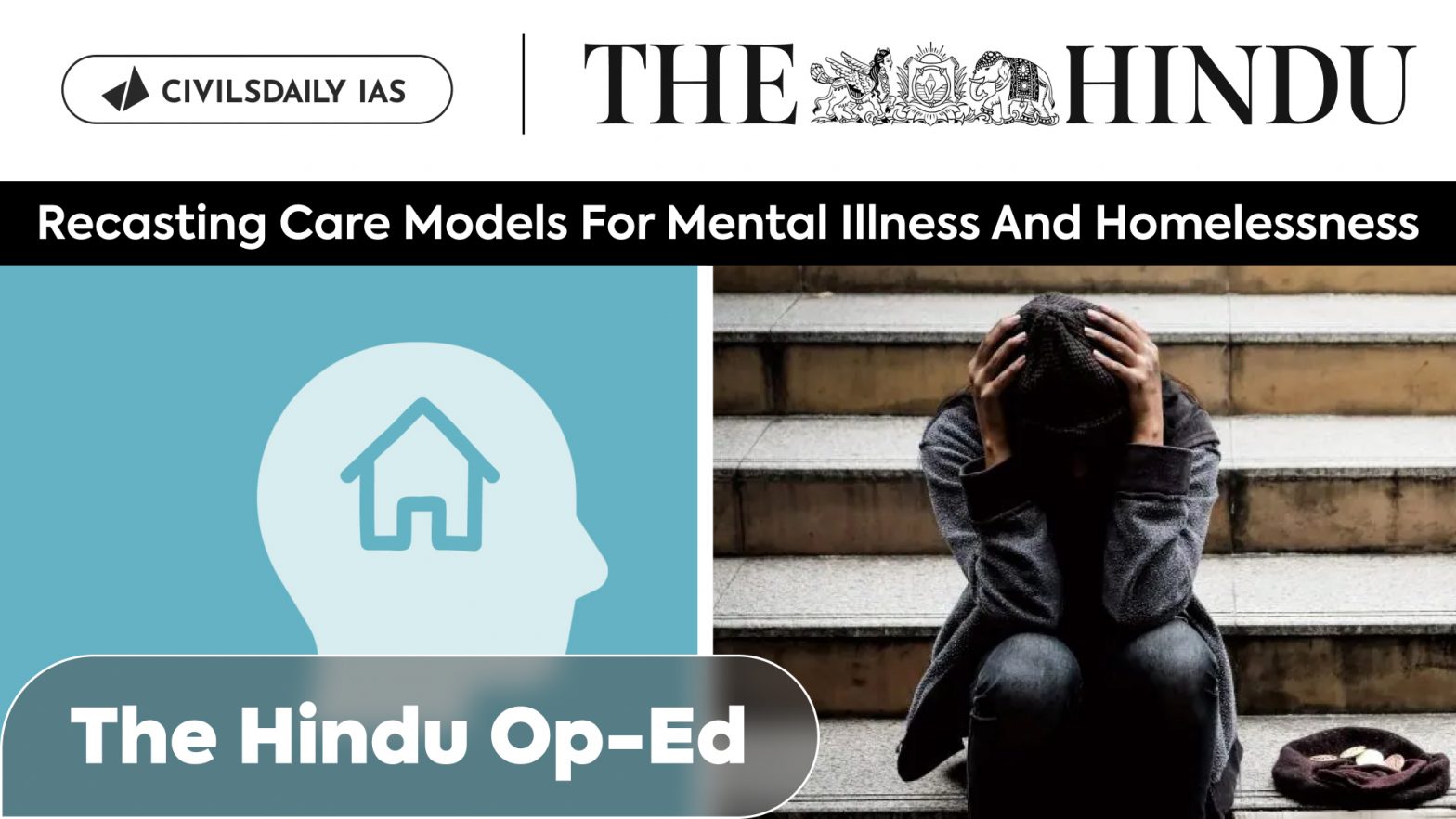| PYQ Relevance: Mains: Q1 Public health system has limitation in providing universal health coverage. Do you think that private sector can help in bridging the gap? What other viable alternatives do you suggest?(UPSC IAS/2015) Q2 What do you understand by nanotechnology and how is it helping in health sector? (UPSC IAS/2020) Prelims: Q Doctors Without Borders (Medecins Sans Frontieres)’, often in the news, is: (a) a division of World Health Organization (b) a non-governmental international organization (c) an inter-governmental agency sponsored by European Union (d) a specialized agency of the United Nations |
Note4Students:
Mains: Challenges related to Homeless individuals;
Mentor comments: Socio-normative representations of homeless persons living with mental illness (HPMI) often depict them as refuge seekers, leading to interventions focused on transferring them to mental hospitals or shelters. This perspective assumes that displacement from the streets is necessary due to associated risks, which, while valid, oversimplifies their complex realities. Such representations result in coercive measures that fail to recognise the agency of HPMI, perpetuating a cycle of institutionalization rather than fostering genuine community reintegration and support. Addressing these representations is crucial for developing more effective and respectful care strategies.
Let’s learn!
__
Why in the News?
Homeless individuals with mental illness are often viewed as needing rescue, leading to their forced relocation to hospitals or shelters, despite the debatable risks of street living.
Efforts at Integration
- Collaborative Initiatives in India: The collaboration among various organizations, including the National Health Mission and local civil society groups, has facilitated access to emergency care and recovery centers (ECRCs) in district hospitals, improving support for homeless persons with mental illness (HPMI).
- Breaking Down Asylum Models: The integration of services aims to dismantle the traditional asylum model, which often perpetuates negative stereotypes about mental illness, by providing more immediate and localized care.
- Last-Mile Proximal Care: The establishment of ECRCs ensures that care reaches individuals in scattered geographies, addressing the immediate needs of those experiencing crises.
- Transformative Care Models: The focus on smaller care units that are adequately staffed emphasizes personal attention and the management of comorbidities, which is essential for those facing prolonged adversities.
Problems with institutional spaces:
- Long-Term Custodial Care: Approximately 37% of individuals in state psychiatric facilities have long-term needs, with many having histories of homelessness. The median duration of stay is six years, indicating a reliance on institutional care rather than effective community reintegration.
- According to the World Health Organization, mental disorders account for 10.6% of total disability among older adults.
- Rigid Discharge Criteria: Discharge criteria for individuals in psychiatric facilities are often overly simplistic, leading to inadequate support for those transitioning back to community life.
- Isolation from Social Resources: Institutional settings create barriers to accessing social resources and community participation, leading to social isolation and a lower quality of life.
- Mental Health America reports that over half (54.7%) of adults with mental illness do not receive treatment, often due to such barriers.
- Ineffective Rehabilitation Models: Current rehabilitation models often default to custodial care, failing to promote innovative, community-based solutions.
- Initiatives like Housing First and the ‘Home Again’ collaborative in India demonstrate the feasibility of comprehensive social and clinical care, yet traditional models continue to limit the potential for improved outcomes for individuals with mental health challenges.
Way forward:
- Shift from Paternalistic to Liberatory Strategies: The need to take social protection measures for homeless people with mental illness (HPMI) must transition from paternalistic interventions to liberatory-focused strategies that honour individual agency.
- This includes implementing a modest monthly disability allowance of ₹1,500 to provide financial support while addressing bureaucratic barriers to accessing essential documentation like Aadhar and banking services.
- Holistic and Imaginative Approaches: Supportive measures must be complemented by imaginative and holistic strategies that address structural issues such as discrimination, violence, and social segregation.

